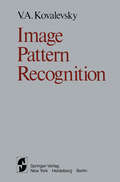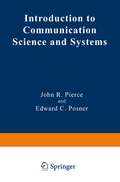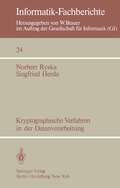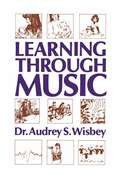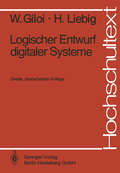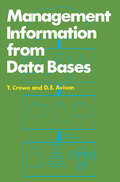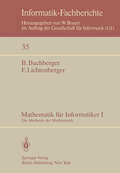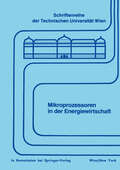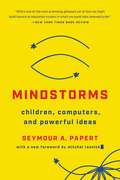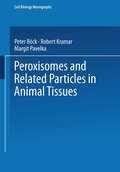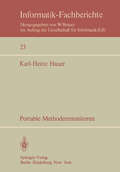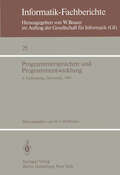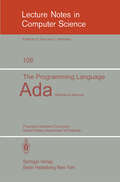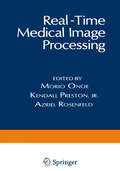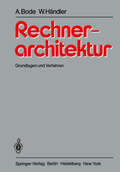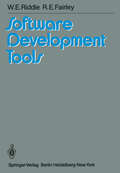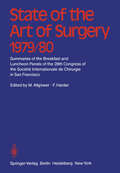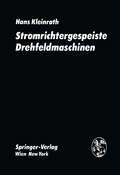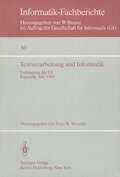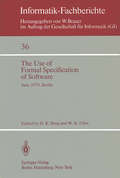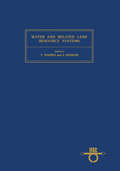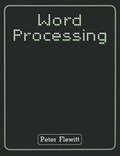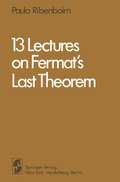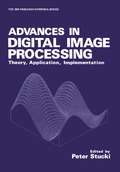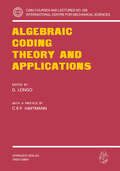- Table View
- List View
Image Pattern Recognition
by V.A. KovalevskyDuring the last twenty years the problem of pattern recognition (specifically, image recognition) has been studied intensively by many investigators, yet it is far from being solved. The number of publications increases yearly, but all the experimental results-with the possible exception of some dealing with recognition of printed characters-report a probability of error significantly higher than that reported for the same images by humans. It is widely agreed that ideally the recognition problem could be thought of as a problem in testing statistical hypotheses. However, in most applications the immediate use of even the simplest statistical device runs head on into grave computational difficulties, which cannot be eliminated by recourse to general theory. We must accept the fact that it is impossible to build a universal machine which can learn an arbitrary classification of multidimensional signals. Therefore the solution of the recognition problem must be based on a priori postulates (concerning the sets of signals to be recognized) that will narrow the set of possible classifications, i.e., the set of decision functions. This notion can be taken as the methodological basis for the approach adopted in this book.
Introduction to Communication Science and Systems (Applications of Communications Theory)
by John R. Pierce Edward C. PosnerThere are many valuable and useful books on electrical communication (References 1-5 are some examples), but they have certain disadvantages for the beginner. The more advanced books present some things in a basic way, but they are very narrow for an introduction to communica tion. The introductory books are broader but still narrow by our stan dards. Further, they often pick things out of thin air rather than derive them. This book is aimed at giving the beginner a basic understanding of a wide range of topics which are essential in communication systems. These include antennas and transmission, thermal noise and its consequences, Fourier transforms, modulation and noise, sampling and pulse code modulation, autocorrelation and power spectrum, optimum filtering, gauss ian noise and errors in digital transmission, data transmission, limits on data rate including information theory and quantum limits, and source encoding. We have not included communications traffic, switching, and multiplexing, nor protocols for digital and computer communications. For these, Reference 6 is excellent. In general, our book does not discuss the circuits used for communication or the physics of radio propagation. We assume that these will be taught in specialized courses, but such courses are not prerequisites for this one. Chapter 1 introduces the transmission formula or antenna equation and antenna directivity. Only a very basic sophomore physics knowledge of electromagnetic theory is assumed. The radar equation is also treated.
Kryptographische Verfahren in der Datenverarbeitung (Informatik-Fachberichte #24)
by Norbert Ryska Siegfried HerdaLogischer Entwurf digitaler Systeme (Hochschultext)
by Wolfgang Giloi Hans LiebigBücher über die Arbeitsweise und den Entwurf logischer oder digitaler Systeme weisen unserer Meinung nach häufig einen Schönheitsfehler auf (manche mehr, manche weniger): sie trennen zu wenig die Betrachtung des funktionellen Ver haltens solcher Systeme von der Betrachtung ihres tee h n i sc he n Verhaltens. Das Standardbuch über Digitaltechnik enthält in der Regel die Definition einer Schalt algebra sowie Methoden der Beschreibung und Minimierung von Schaltnetzen und Schaltwerken, aber zum Beispiel auch die Darlegung der Arbeitsweise von Dioden und Transistoren als logische Verknüpfungselemente, den Aufbau und die Arbeitsweise von Ferritkern-Speichern, und wenn es modern ist, wird es auch die schaltungs mäßige Realisierung von integrierten Verknüpfungselementen behandeln. Wir wollen hierdurch keineswegs ausdrücken, daß die Fragen des technischen Auf baus von logischen Systemen nicht sehr wichtig sind und einer theoretischen Durch dringung wie einer Anleitung zum praktischen Handeln bedürfen. Diese Fragen je doch zum Bestandteil eines Lehrbuchs zu machen, birgt bei dem atemberaubenden Tempo der technischen Entwicklung ständig die Gefahr in sich, daß ihre Darstellung bereits in dem Augenblick veraltet ist, in dem das Buch im Druck erscheint. Die aktuellsten Informationen auf diesem Gebiet sind zwangsläufig die Handbücher der Schal tkrei s -Hersteller.
Mathematik für Informatiker I: Die Methode der Mathematik (Informatik-Fachberichte #35)
by B. Buchberger F. LichtenbergerMikroprozessoren in der Energiewirtschaft (Schriftenreihe der Technischen Universität Wien #13)
by L. BauerMindstorms: Children, Computers, And Powerful Ideas
by Seymour A. PapertIn this revolutionary book, a renowned computer scientist explains the importance of teaching children the basics of computing and how it can prepare them to succeed in the ever-evolving tech world.Computers have completely changed the way we teach children. We have Mindstorms to thank for that. In this book, pioneering computer scientist Seymour Papert uses the invention of LOGO, the first child-friendly programming language, to make the case for the value of teaching children with computers. Papert argues that children are more than capable of mastering computers, and that teaching computational processes like de-bugging in the classroom can change the way we learn everything else. He also shows that schools saturated with technology can actually improve socialization and interaction among students and between students and teachers.Technology changes every day, but the basic ways that computers can help us learn remain. For thousands of teachers and parents who have sought creative ways to help children learn with computers, Mindstorms is their bible.
Peroxisomes and Related Particles in Animal Tissues (Cell Biology Monographs #7)
by P. Böck R. Kramar M. PavelkaIn modern scientific investigation the fields of biochemistry, molecular biology, and morphology comprise an indivisible area of study. The present book results from the cooperation of a bioehernist and morphologists: the revision and unified treatment of available data is the primary object of our work. A comprehensive review of all the available literature is therefore beyond the scope of this volume. lt is intended to be a manual to be used in the laboratory, with convenient guidelines for practical work. Plant microbodies have been treated by B. GERHARDT in Volume 5 of this series. The discovery of fatty acid ß-oxidation in animal peroxisomes has proved once more that plant and animal microbodies are members of the same family of organelles. lt provided new insights into the physiological meaning of these particles; our understanding of these "classical" cell organelies is undergoing continual alteration and development. PETER BöcK Vienna, July 1980 ROBERT KRAMAR MARGIT PAVELKA Acknowledgements We wish to express our gratitude to Prof. Dr. D. H. FAHIMI and Dr. P. KALMBACH (Heidelberg) for kindly providing Figure 14, to Prof. Dr. KARIN GoRGAS (Heidelberg) for allowing the reproduction of Figure 43, to Profs. Dr. L. STOCKINGER and Dr. E. KAISER for helpful criticism, and to all our colleagues in our respective institutes. W e are especially grateful to Drs. H. GoLDENBERG and M. HüTTINGER for continuous discussion, to Mrs. JuTTA SELBMANN for typing the references, and to Mr. P. KAMPFER and Mr. H. WAGNER for carefully drawing some of the figures.
Portable Methodenmonitoren: Dialogsysteme zur Steuerung von Methodenbanken: softwaretechnischer Aufbau und Effizienzanalyse (Informatik-Fachberichte #23)
by K.-H. HauerProgrammiersprachen und Programmentwicklung: 6. Fachtagung des Fachausschusses Programmiersprachen der GI, Darmstadt, 11.–12. März 1980 (Informatik-Fachberichte #25)
by H. J. HoffmannDie Fachtagungen, die der Fachausschuß 2 PROGRAMMIERSPRACH~N der Gesellschaft für Informatik*) seit 1971 regelmäßig, nunmehr zum sechsten Mal, veranstaltet und in Ta gungsbänden dokumentiert, geben Zeugnis von dem jeweiligen Selbst-Verständnis des Faches PROGRAMMIERSPRACHEN, zumindest aus der Sicht einiger seiner Repräsentanten und der Vortragenden. Die 6. Fachtagung, die am 11. und 12. März 1980 in Darmstadt stattfindet, spielt darin sicherlich keine Sonderrolle. Es wurde diesmal eine breitere Thematik gewählt, wie es aus der Tagungsbezeichnung hervorgeht, nämlich PROGRAMMIERSPRACHEN UND PROGRAMMENTWICKLUNG. Jedenfalls wird damit zum Ausdruck gebracht, daß Programmiersprachen nicht nur eine Zielsetzung in sich haben, d.h. einem Selbstzweck unterworfen sind, sondern zu einem weiteren Zweck, der Programmentwicklung, in Beziehung treten, in Beziehung treten müssen. Dieses verbreiterte Selbst-Verständnis hat sich - bedauerlicherweise - im Tagungsprogramm und als Folge davon im Tagungsband nicht übermäßig deutlich ausge wirkt. Die Veranstalter legen allerdings zum Zeitpunkt der Drucklegung die (berech tigte) Hoffnung, daß in der vorgesehenen Diskussion über "Software Engineering - Programmiersprachen, Programmentwicklung -" zu der breiteren Thematik einige beach tenswerte Aussagen kommen. Im Tagungsband, der den Tagungsteilnehmern zu Beginn der Tagung ausgehändigt wird, läßt sich eine solche Diskussion noch nicht einfangen; ihre Auswirkungen zeigen sich, hoffentlich, an anderer Stelle.
The Programming Language Ada: Reference Manual. Proposed Standard Document United States Department of Defense (Lecture Notes in Computer Science #106)
by Honeywell Cii Honeywell BullSoftware Development Tools
by W.E. Riddle R.E. FairleyThis text contains the proceedings of a workshop on software develoDment tools, held at Pingree Park, Colorado in May, 1979. The workshop, for which we were co-chair men, was primarily, but not exclusively, concerned with a variety of tools supporting pre-implementation phases of software development. The workshop brought together researchers and practitioners from industrial, governmental, and academic sectors to compare and assess current work and to set some directions for future work in this emerging technical area. The fifty participants represented research and development efforts in software tools within the United States, Canada, France, Great Britain, and Japan. (A list of participants appears at the end of the text. ) Sponsorship was provided by the National Aeronautics and Space Administration, the National Bureau of Standards, the National Science Foundation, and Digital Equipment Corporation. The conference consisted of seven formal sessions and numerous organized and impromptu discussions. Each session (except the last) included invited papers, prepared remarks by discussants, and an open discussion.
State of the Art of Surgery 1979/80: Summaries of the Breakfast and Luncheon Panels of the 28th Congress of the Société Internationale de Chiurgie in San Francisco
by Martin Allgöwer and Felix HarderInternational surgical meetings with thousands of participants speaking a dozen different languages tend to be frustrating for the individual who comes with the hope of learning about progress in his fields, but who additionally would like to be able to ex change ideas on controversial topics and to meet competent people with whom to discuss specific problems. In the "one-way" ses sions in which long papers are presented, details or specific points may be missed. Differing views often are not adequately discussed, because the meeting and its participants are pressed for time. The 44 breakfast and luncheon sessions, covering different topics of interest to the practicing surgeon, were mainly planned to overcome these classical "congress handicaps" and also to do away with the anonymous atmosphere of such a large congress. Slides and formal papers were banished from these sessions. The outcome of these very lively and pleasant discussions taking place around small well-dressed tables was unexpected by most participants. A chairman and several panel members shared their repast, caloric and intellectual, with some 10-30 congress par ticipants. The result was in each instance a lively, informative intimate discussion, very different from the anonymous atmo sphere of a large meeting. In the hope of preserving these ex changes, the chairmen were requested immediately the session finished to "distill the essence" of the 90-minute exchange into a summary captured on tape.
Textverarbeitung und Informatik: Fachtagung der GI Bayreuth, 28. – 30. Mai 1980 (Informatik-Fachberichte #30)
by P. R. WossidloThe Use of Formal Specification of Software: June 25–27, 1979, Berlin (Informatik-Fachberichte #36)
by H. K. Berg W. K. GiloiThe notion that program design is an engineering task alleviating the software crisis has been with us for about a decade. With the recognized advantages of obeying to certain software design disciplines, we are approaching the era of enforced system development standards which will ensure that end products will meet rigorous design requirements. On the one hand, advances in system architecture fUrther the application of system development standards to software and firmware design and production. On the other hand, the growth in complexity of future system architectures, in particular distri buted systems with their special problems of cooperation and parallelism, necessitate the use of rigorous specification and design techniques. In addition to hampering the design process, the lack of engineering techniques hinders research. In many cases, trial designs that are presented in abstract and informal terms do not force the de signer to face the full problem spectrum, and therefore may not sufficiently provide insight into the design process. To prepare for the forthcoming discipline and to provide a snapshot view of recent advances in software and firmware engineering, we organized in June of 1979 a seminar entitled: "The Use of Formal Specification of Software and Firmware". The seminar took place at the Heinrich-Hertz-Institute, Berlin, and attracted over 60 participants, most of them from the industry.
Water and Related Land Resource Systems: IFAC Symposium, Cleveland, Ohio, U.S.A., 28-31 May 1980
by Y. Haimes J. KindlerWater and Related Land Resource Systems covers IFAC Symposium that aims to address resource problem, as well as methodologies and procedures for respective solutions. Consists of 60 chapters, the book is organized in sessions according to the technical program of the conference. The book first tackles multiobjective planning in water and land resources, which is followed by acquisition and analysis of surface water quality data. The next part covers hierarchical water resource planning and management models, while the succeeding part is about environmental and ecological aspects of water and land resources. The fifth session discusses the impact of energy development on water and land resources. Session VI covers modeling and systems identification problems in water resources, and Session VII covers acquisition and analysis of hydrologic data. The eighth session tackles ground water and its conjunctive use with surface water, while the next session talks about sedimentation and land management. The tenth session is about multiobjective planning in water and land resources. Predicting and forecasting models in water resources is the topic of Session XI, while Session XII discusses evaluation and calibration problem in water resource modeling. The closing chapter covers water and land issues in urban areas. Professionals whose work revolves around recourse management and researchers whose work is in line with natural resource will find great information in this book that will be relevant in their trade.
Advances in Digital Image Processing: Theory, Application, Implementation
by P. StuckiDigital image processing, originally established to analyze and improve lunar images, is rapidly growing into a wealth of new appli cations, due to the enormous technical progress made in computer engineering. At present, the most important fields of growth appear to emerge in the areas of medical image processing (i. e. tomography, thermography), earth resource inventory (i. e. land usage, minerals), office automation (i. e. document storage, retrieval and reproduction) and industrial production (i. e. computer vision for mechanical ro bots). Currently, emphasis is being shifted from signal-processing re search and design-innovation activities towards cost-efficient system implementations for interactive digital image processing. For the years ahead, trends in computer engineering indicate still further advances in Large Scale Integration (LSI) and Input/Output (I/O) technologies allowing the implementation of powerful parallel and/or distributed processor architectures for real-time processing of high resolution achromatic and color images. In view of the many new developments in the field of digital image processing and recognizing the importance of discussing these developments amongst key scientists that might make use of them, ffiM Germany sponsored an international symposium on 'Advances in Digital Image Processing', held at Bad Neuenahr, Federal Republic of Germany, September 26 - 28, 1978. The interest shown in this symposium encouraged the publi cation of the papers presented in this volume of the ffiM Research Symposium Series.
